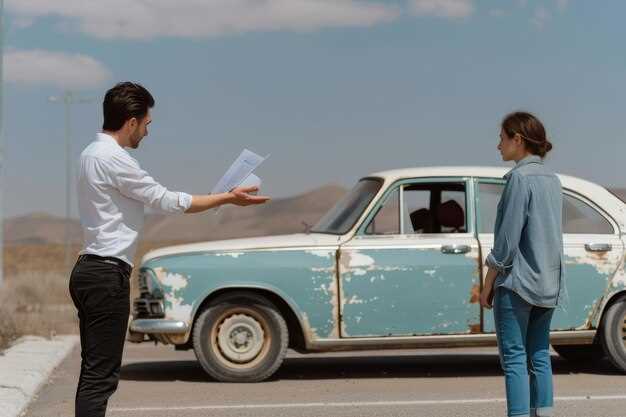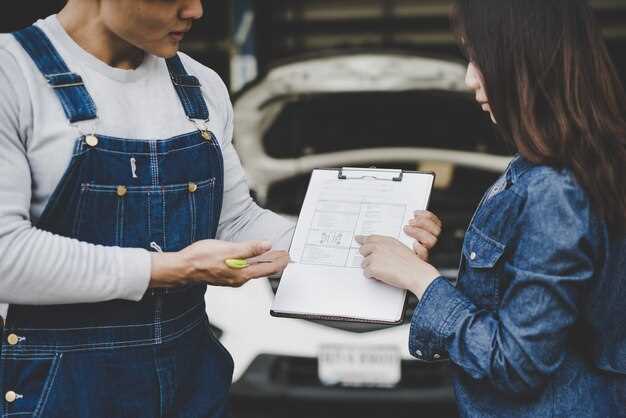
Buying a vintage vehicle is an exciting journey that requires careful consideration. Whether you are a seasoned collector or a first-time buyer, having a well-structured checklist can help ensure that you make an informed decision. This guide outlines essential points to check to help you navigate the complexities of purchasing a used vintage vehicle.
First and foremost, understanding the condition of the vehicle is crucial. Assessing the exterior and interior for any signs of wear, rust, or damage is vital. Look for inconsistencies in paint and bodywork; these could indicate previous accidents or poor maintenance. In addition, checking the engine and undercarriage will give you insights into the vehicle’s overall health and history.
Another significant aspect to consider is verifying the vehicle’s documentation. Ensure that the title is clear and that there are no outstanding liens. Also, checking for the authenticity of the vintage registration can protect you from potential legal troubles. This step will help to solidify your investment and give you peace of mind as you enjoy your classic ride.
Assessing the Condition of the Vehicle

When considering a vintage vehicle, it is crucial to thoroughly check its condition to ensure it is a worthy investment. Begin by evaluating the exterior for signs of rust, dents, or previous paintwork that might indicate hidden damage. Classic cars often suffer from weathering, so inspect the body panels and undercarriage closely.
Next, pay attention to the engine and mechanical systems. A used vehicle may have components that have worn down over time. Check for leaks, listen for unusual noises, and assess the engine’s overall performance. It is advisable to obtain a comprehensive mechanical evaluation to identify any potential issues before making a decision.
The interior is also important; examine the dashboard, upholstery, and any electronic components. Ensure that all systems are functional, including the heating and air conditioning. Replacement parts may be needed for vintage models, which can affect the overall cost. Verify the condition of the tires and brakes, as these are essential for safety and performance.
Documentation is another key element in assessing condition. Look for service history, previous ownership records, and any restoration work done. This information can provide insight into how well the vehicle has been maintained and its overall reliability.
In summary, a meticulous check of both the physical and operational aspects of the classic vehicle will help you determine its condition and the potential value it offers as a collectible or daily driver.
Verification of Documentation and History

When purchasing a vintage vehicle, verifying documentation and history is crucial to ensure a worthwhile investment. Follow these key points to conduct a thorough check.
1. Title Verification: Ensure the title is clear, which indicates that there are no liens or disputes. A clean title is essential for proving ownership and is necessary for registration.
2. Vehicle Identification Number (VIN): Cross-check the VIN on the vehicle with the one on the title and other documents. This verification helps confirm that the vehicle’s identity matches its paperwork.
3. Service History: Request detailed service records to assess how the vehicle has been maintained over the years. A well-documented maintenance history reflects the care taken by previous owners and can indicate potential future issues.
4. Mileage Verification: Investigate the odometer reading against service records, title documents, and any vehicle history reports. Anomalies in mileage can suggest possible tampering or hidden problems.
5. Vehicle History Report: Obtain a report from a reliable service, such as Carfax or AutoCheck. These reports provide critical information on accidents, past ownership, and any reported damages or thefts that could affect the vehicle’s value.
6. Previous Ownership: Inquire about the previous owners to evaluate how the vehicle was treated. A classic car owned by a dedicated enthusiast may be more desirable than one subjected to neglect.
7. Registration Records: Check the registration history to ensure that all periods of ownership are documented and that the vehicle complies with local regulations, especially if it will be used regularly.
8. Authenticity Verification: If you’re buying a classic model, verify that it matches the original specifications and has not been modified in ways that may diminish its value. Originality is often a key factor in the vintage car market.
By diligently checking these points, you can gain confidence in the classic vehicle’s documentation and history, steering clear of potential pitfalls in your vintage vehicle purchase.
Evaluating the Cost of Ownership and Maintenance
When considering the purchase of a vintage vehicle, understanding the cost of ownership and maintenance is crucial. This analysis will help you determine if a classic car fits within your budget and lifestyle. Here are some key points to check:
1. Insurance Costs: Vintage vehicles often require specialized insurance. Research various companies and obtain quotes that can cover classic cars. Ensure the policy accounts for the vehicle’s true market value.
2. Maintenance and Repairs: Older vehicles may need more frequent maintenance than modern cars. Look into common repair issues specific to the make and model you are interested in. Service manuals and forums can provide invaluable insight into typical maintenance costs.
3. Parts Availability: Check the availability of parts for your chosen classic vehicle. Some models may have limited parts production, leading to higher costs and longer wait times for repairs. Familiarize yourself with aftermarket options, as they can sometimes save on expenses.
4. Fuel Efficiency: Vintage cars are not always fuel-efficient. Calculate expected fuel costs based on the vehicle’s mileage and your anticipated driving habits. This can significantly impact your total cost of ownership over time.
5. Storage Requirements: A classic vehicle often requires proper storage to prevent deterioration. Consider the costs associated with garaging or ensuring the vehicle is safeguarded from the elements, as well as any applicable property or rental fees.
6. Club Memberships and Events: Joining a classic car club can offer valuable resources and support but may also involve membership fees. Additionally, participating in events can incur costs for registration, travel, and accommodations.
Analyzing these factors will provide a clearer picture of the financial commitment required for owning a vintage vehicle. By thoroughly evaluating the costs associated with ownership and maintenance, you can make an informed decision that aligns with your goals and expectations.
